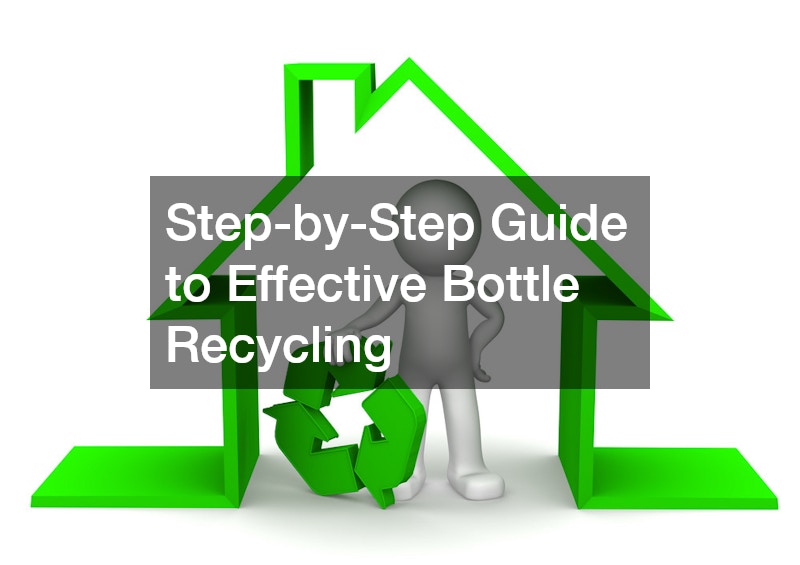Bottle recycling plays a crucial role in reducing landfill waste and conserving resources, especially in a country like Australia where sustainability has become a top priority. As more households and businesses embrace eco-friendly habits, understanding how to recycle bottles effectively is essential.
This guide will walk you through the key steps of efficient bottle recycling, from collection to final processing, helping you make a meaningful environmental impact.
Understand the Importance of Bottle Recycling
Before diving into the process, it’s important to understand why bottle recycling matters. Each year, Australians use billions of plastic and glass bottles, many of which end up in landfills or the ocean. Recycling these bottles reduces the demand for raw materials, cuts greenhouse gas emissions and supports a circular economy. When bottles are recycled properly, they can be turned into new containers, construction materials or even clothing fibres, significantly lowering the environmental footprint.
Governments across the country have introduced container deposit schemes that reward consumers for returning used bottles. These initiatives not only incentivise recycling but also increase public awareness of waste reduction. Recognising the benefits of bottle recycling is the first step towards adopting consistent and effective practices at home or in the workplace.
Sort Bottles at the Source
The most effective recycling efforts begin at the source. Properly sorting bottles as soon as they’re emptied ensures they remain uncontaminated and suitable for recycling. You should separate plastic, glass and aluminium bottles, as these materials are typically processed differently at recycling facilities. Additionally, ensure the bottles are free of leftover liquids, food residue or non-recyclable components like plastic straws and caps, unless your local council advises otherwise.
Labelling bins clearly at home, in offices or community areas encourages everyone to dispose of bottles correctly. Taking a moment to rinse out bottles and remove unnecessary labels or packaging helps maintain the quality of recyclable materials and reduces the risk of entire batches being rejected by recycling centres due to contamination.
Know What Can & Cannot Be Recycled
A common mistake in bottle recycling involves placing non-recyclable items in the recycling bin. Different councils have specific rules regarding what types of bottles are accepted. Generally, plastic bottles labelled with codes 1 (PET) and 2 (HDPE) are widely recyclable, while certain coloured plastics, soft plastics or bottles with mixed materials might not be.
Glass bottles are typically recyclable, but ceramics, drinking glasses or heat-resistant glass are not. Being familiar with the guidelines provided by your local waste management authority ensures that only acceptable items enter the recycling stream, making the process more efficient and less costly for recycling plants.
Use Local Return & Earn Programs
Australia’s state-based container deposit schemes make it easy to recycle bottles while earning money. Programs such as Return and Earn in New South Wales or Containers for Change in Queensland allow residents to deposit eligible bottles at designated return points and receive a refund, typically 10 cents per item.
Participating in these programs not only supports local recycling initiatives but also contributes to community causes. Many return stations partner with charities, giving you the option to donate your refunds. This creates a double impact—promoting sustainability while supporting social good.
Store & Transport Bottles Efficiently
When preparing bottles for recycling or return schemes, efficient storage and transport can make a significant difference. Compacting plastic bottles by squashing them helps save space and reduces the number of collection trips needed. Keep bottles in sturdy bags or crates to prevent them from spilling during transport and to minimise breakage, especially for glass.
If you’re involved in larger-scale recycling efforts, such as in schools, businesses or community events, having a designated collection area with clear signage and regular pickups ensures a steady and hygienic recycling process. Maintaining a clean storage area also prevents pests and unpleasant odours from accumulating.
Support Brands & Products That Use Recycled Bottles
One of the most powerful ways to close the recycling loop is by purchasing items made from recycled bottles. Many Australian brands now offer products that incorporate recycled PET plastic or glass, including clothing, packaging and building materials. By supporting these businesses, consumers help sustain demand for recycled materials and reinforce the economic viability of bottle recycling.
Look for labels that indicate the use of post-consumer recycled materials. Choosing products with minimal or recyclable packaging further contributes to waste reduction and supports environmentally responsible supply chains.
Educate & Involve Others
Effective bottle recycling is a collective effort. Sharing knowledge and encouraging others to participate helps expand the positive impact. Schools, businesses and community groups can play a vital role by organising awareness campaigns, bottle collection drives or clean-up events.
By setting an example and offering practical guidance, you can motivate others to be more mindful of how they handle recyclable waste. Discussions with neighbours, social media posts and community events are simple yet effective ways to spread the message and promote a more sustainable lifestyle.
Committing to a Greener Future Through Bottle Recycling
Bottle recycling is more than just tossing a container into a bin—it involves conscious actions at every stage, from correct sorting to supporting recycled products. By following a consistent and informed approach, Australians can help reduce waste, conserve resources and support a healthier environment. Whether through local return schemes, everyday habits or community engagement, every effort contributes to a cleaner, more sustainable future. Now is the time to make bottle recycling a standard part of daily life.
.

